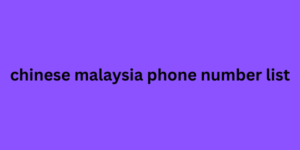Plivo’s Quick Guide to SMS Opt-In and Opt-Out
Research shows that most consumers want to receive text chinese malaysia phone number list messages from brands they know and love. In fact, according to Yotpo, more than 80% of shoppers are already signed up to receive text messages from at least one brand.
Despite the data clearly indicating that your brand can and should take advantage of SMS marketing, you still explicitly need your customers' permission to text them. Opt-in and opt-out regulations dictate how individuals give or withhold consent for their personal information to be collected, used, or shared.
Opt-in and opt-out regulations differ from region to region. Some may mandate opt-in for certain data types, while others may allow opt-out. In this guide, we’ll outline the key tenets of opt-in rules, share the most widely applicable best practices, and suggest the best way to manage these permissions so your company remains compliant.

Why businesses must ask for opt-in permission
There are several reasons why businesses must ask their customers for opt-in permission. First and foremost, it’s a legal requirement in many places. For instance, the General Data Protection Regulation (GDPR) in the European Union mandates opt-in consent for certain types of data processing. Under GDPR, consent must be freely given, specific, informed, and unambiguous. Failing to obtain proper opt-in consent can lead to significant fines and legal issues for businesses.
Opt-in and opt-out options also help businesses demonstrate respect for user privacy and build customer trust. These permissions give users control over their personal information, which can strengthen a company’s reputation. Opt-in models require businesses to clearly explain:
